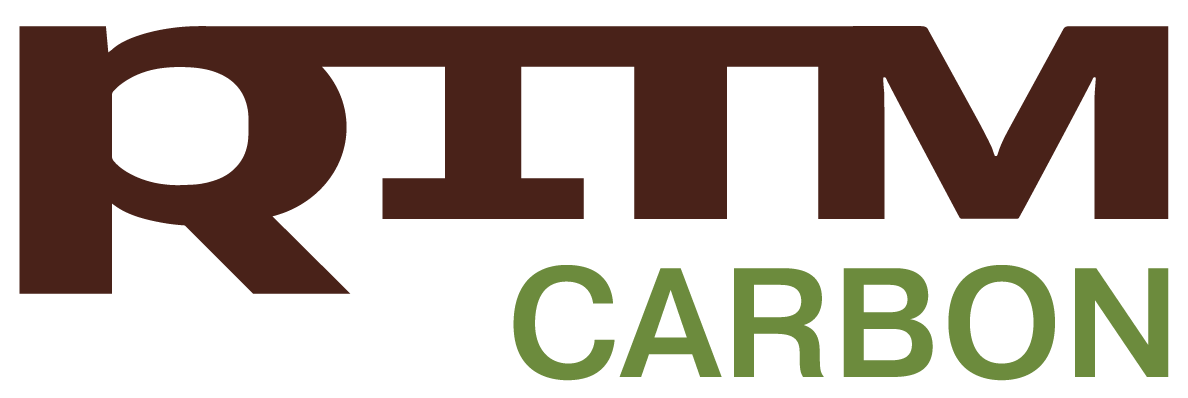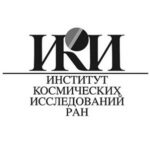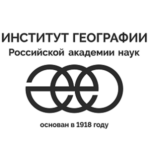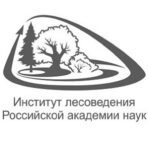Develop a national system for monitoring carbon pools and greenhouse gas fluxes in Russia based on the integration of:
GOAL
MONITOR
CLIMATICALLY ACTIVE SUBSTANCES
ground-based measurements data
remote sensing data
mathematical simulation data
Create a system for recording the data on greenhouse gas fluxes and
carbon budget in terrestrial ecosystems

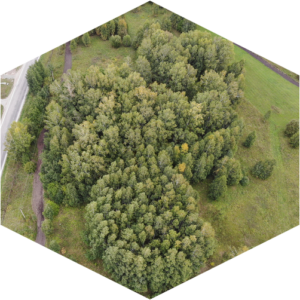
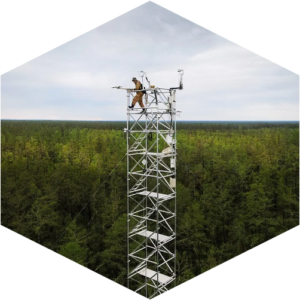
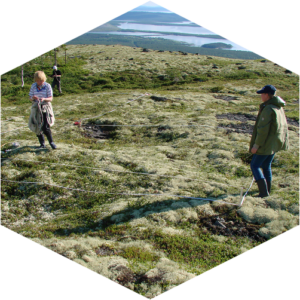
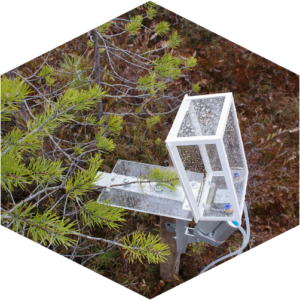
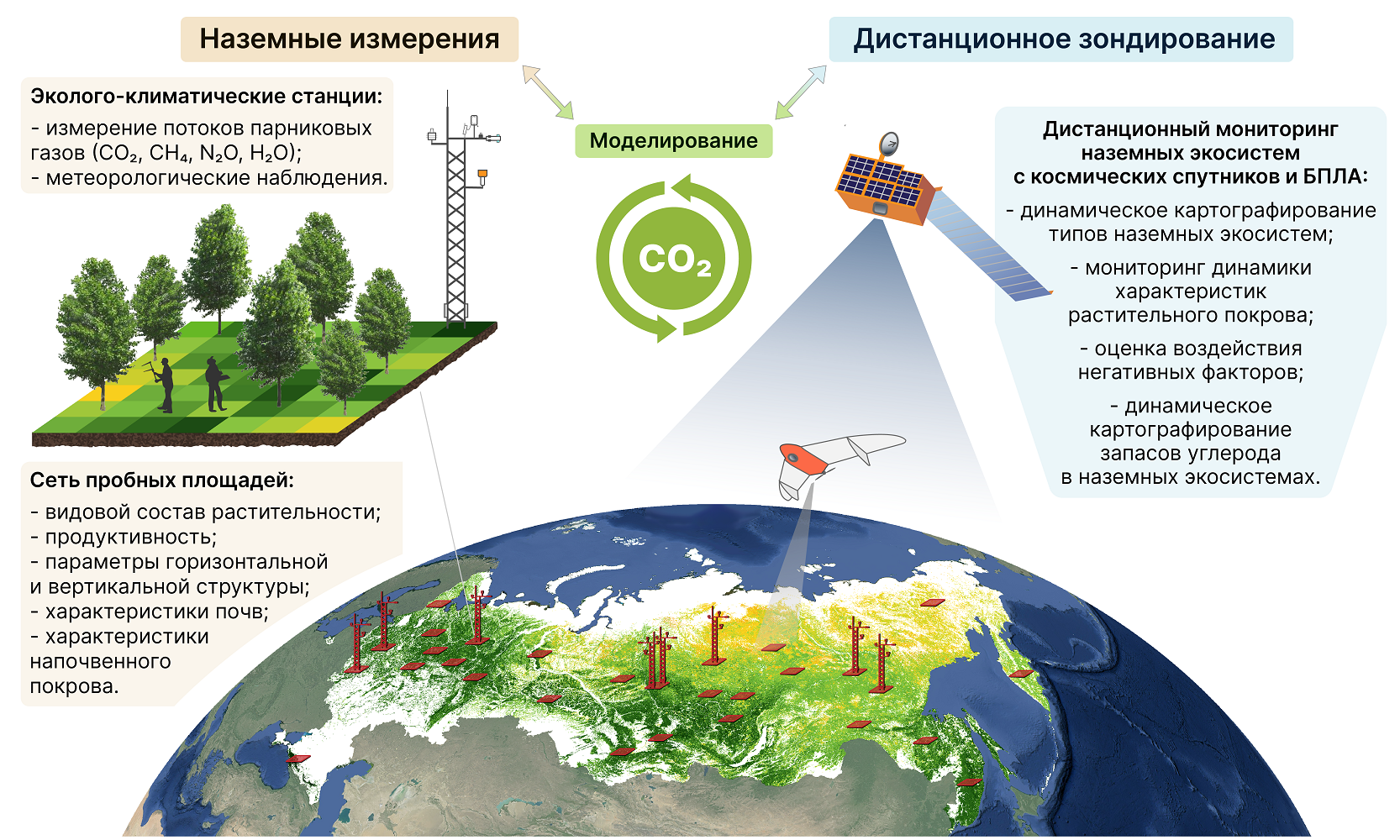
OBJECTIVES
GOALS AND OBJECTIVES OF PROJECT PARTICIPANTS

Develop a system to monitor the carbon budget in terrestrial ecosystems based on the integration of ground-based measurements data, remote sensing data, and mathematical simulation data
Goal
Develop a system for ground-based and remote monitoring of carbon pools and greenhouse gas fluxes in Russia; ensure the development of a system for recording data on the fluxes of climatically active substances and carbon budget in forests and other terrestrial ecosystems
Objectives
Develop a system for monitoring and forecasting carbon pools and greenhouse gas fluxes in representative forests and other ground-based natural and natural-anthropogenic ecosystems of the Russian Federation based on the integration of ground-based monitoring data, remote sensing data, and mathematical simulation data;
Improve the accuracy of assessing greenhouse gas absorption in forest ecosystems by clarifying the quantitative and qualitative forest characteristics based on remote sensing of the Earth, considering the contribution of soils and lower-tier vegetation, recording greenhouse gas emissions due to the impact of wildfires, outbreaks of overproduction in insects, and forest diseases;
Forecast the greenhouse gas absorption by forests using combined modes of forest management and climate change scenarios based on a combination of mathematical simulations;
Create an observation program for a unified national system for monitoring climatically active substances in terms of ground-based and remote monitoring of carbon pools and greenhouse gas fluxes in the territory of the Russian Federation.
Goal
Develop working prototypes for the technology for automated processing of remote sensing data of the Earth and create a data analytics system to ensure continuous monitoring of carbon reserves and the balance between forests and other terrestrial ecosystems of the Russian Federation.
Objectives
Develop methods and technologies to assess the main features of forests for monitoring of carbon reserves and carbon balance based on satellite remote sensing data of medium spatial resolution;
Develop methods and technologies to detect and assess forest disturbances due to the impact of wildfires and other destructive factors based on satellite remote sensing data of medium spatial resolution;
Obtain an updated assessment of carbon reserves and carbon balance in the forests of the Russian Federation based on the methods and technologies developed;
Develop the functionality and information support for the current prototype of a national data analytics system for monitoring of carbon in terrestrial ecosystems of the Russian Federation;
Form a set of reference data on the forests features for a network of test sites based on the processing of satellite remote sensing data of high spatial resolution and ground-based measurements;
Develop methodological approaches to mapping of meadow and steppe ecosystems based on satellite remote sensing data of medium spatial resolution;
Expand the technical framework to develop and create the data analytics system Uglerod-E (incl. procurement and commissioning of the necessary computer facilities and equipment);
Develop the basic structure and elements of specialized units of the data analytics system Uglerod-E aimed at providing ground-based and aerial (UAV) monitoring of forest carbon pools;
Develop proposals for the development of the central unit of the data analytics system Uglerod-E (also to ensure the option of solving the tasks of assessing and monitoring carbon reserves and the carbon budget in various terrestrial ecosystems).

Assess the spatial and temporal variability of ecosystem greenhouse gas fluxes in terrestrial ecosystems of the Russian Federation
Goal
Obtain estimates of the spatial and temporal variability of ecosystem fluxes of greenhouse gases based on a network of environmental and climate monitoring stations
Objectives
Develop methodological recommendations to organize the monitoring of ecosystem fluxes of greenhouse gases based on the method of turbulent pulsations.
Develop and form a database of ecosystem greenhouse gas fluxes; integrate the database into a unified data analytics system for carbon pools and carbon fluxes on the territory of the Russian Federation.
Modernize the instrumental framework of greenhouse gas fluxes observations in the southern taiga ecosystems of the European part of the Russian Federation.
Monitor ecosystem greenhouse gas fluxes in the southern taiga ecosystems of the European part of Russia; obtain cumulative estimates of greenhouse gas flows in daily and seasonal dynamics.
Assess CO2 emissions from soils of representative southern taiga ecosystems of the European part of the Russian Federation; integrate the measurements data into a unified database for emissive fluxes.
Goal
Assess carbon pools and the carbon budget in representative ecosystems of coniferous-deciduous and deciduous forests in the southern part of Moscow Oblast and conduct predictive modeling to assess the dynamics of carbon pools and carbon fluxes in forest ecosystems
Objectives
Conduct intensive year-round monitoring of CO2 emissions from soils of 6 representative ecosystems in mixed and deciduous forests and analyze the data obtained with reference to the changes in hydrothermal indicators.
Develop a database of CO2 emissions from soils of representative ecosystems in the southern part of Moscow Oblast in accordance with the developed structure.
Integrate the observations of CO2 emissions from soils collected by other organizations of the consortium into a unified database to include them in the data analytics system, and conduct its primary analysis within the framework of the developing national monitoring network.
Develop a brief procedure and conduct training seminars related to recording CO2 emissions from soils by the chamber method while using domestic equipment.
Determine main carbon pools in representative forest ecosystems in the southern part of Moscow Oblast by unified methods developed by the consortium’s expert teams, and analyze the data obtained.
Assess the rates of change in C reserves in the soils of the southern part of Moscow Oblast when transferring arable land to fallow lands.
Using the existing means of integrating the Romul_Hum soil organic matter dynamics model with the FORRUS-S dynamic tree stand model, forecast changes in main carbon pools of mortmass (deadwood, hardwood, forest litter, soil organic matter) and heterotrophic soil respiration for key forest areas.
Goal
Develop and substantiate the legal and infrastructural framework for collection, processing, analysis, storage, and use of reliable and internationally recognized observed and calculated data to conduct an objective assessment of carbon budget indicators in agroecosystems of Russia as a component of the Unified National System for Monitoring Climatically Active Substances
Objectives
Develop and test scientific and methodological, scientific and technical, information and metrological support for the observation network of ground-based recording and monitoring of carbon budget features in agroecosystems of Russia, in particular:
- design the location of a ground-based monitoring observation network to assess carbon reserves and carbon budget in Russian agroecosystems with various modes of agricultural land use;
- develop and test, using a simulation network of test sites, the methods for assessing carbon pools in Russian agroecosystems that meet international standards, including a procedure for soil sampling, sample preparation, analytical determination of organic/inorganic carbon values in soils, soil density, use of reference samples, verification of laboratory equipment, and interlaboratory comparison tests;
- launch the first stage of the network of model test sites for agroecosystems of Russia with various modes of agricultural land use (at least five sites)
Develop and substantiate a methodology for verifying and calibrating the remote sensing results for carbon budget features in agricultural ecosystems of Russia;
Create a themed component of the unified data analytics system to collect, store, process, and analyze monitoring data of carbon pools in agroecosystems of Russia;
Prepare popular science aids and conduct activities aimed at raising awareness among the general public as well as businesses and management units of various levels in the field of biogeochemical carbon cycle management in agricultural land use
Goal
Create a national system for monitoring climatically active substances and carbon reserves in the main natural and anthropogenically modified ecosystems of the black earth region and forecasting on the territory of Russia in order to provide adaptation solutions to be applied locally and nationally
Objectives
Determine the seasonal and interannual variability of the balance of main biogenic greenhouse gases in crucial agricultural and natural ecosystems of the forest-steppe subzone in the European part of Russia. Assess the main carbon reservoirs in ecosystems under study with a given frequency. Develop a system of permanent test sites for long-term field observations of the dynamics of greenhouse gases and related components of the main biogeochemical cycles within the test site area;
Based on field observations (see Objective 1), select, adjust, and verify simulation and regression models, as well as C-calculators that reflect the biogeochemical carbon cycle on the developed agricultural black earth area of Russia. Provide methodological support of spatiotemporal models for quantitative assessment of carbon balance components using remote sensing data and ground-based measurements for the use in the monitoring system;
Ensure continuous replenishment and modification of the database in accordance with the consortium’s methodological requirements.
Goal
Design a scientific and methodological framework for the development of a monitoring system for anthropogenic and rewatered peatlands being the sources and sinks of greenhouse gases.
Objectives
Develop a methodological framework for monitoring drained and rewatered peatlands being the sources and sinks of greenhouse gases.
Develop a methodological framework for recording rewatered unused drained peatlands in the national inventory of anthropogenic sources and absorption by sinks of greenhouse gases that are not regulated by the Montreal Protocol.

Provide model estimates for modern carbon pools and carbon fluxes in the tundra and forest-tundra zones of Russia. Synthesize the data on methane emissions from terrestrial ecosystems of Russia
Goal
Assess modern carbon pools and carbon fluxes in the tundra and forest-tundra zones of Russia using the mathematical simulation methods. Identify areas in Russia whose ecosystems should be included in the methane emission monitoring system
Objectives
Modernize the existing two-compartmental model of the carbon cycle in tundra and forest-tundra ecosystems into a three-compartmental one.
Clarify the functional dependences of carbon fluxes on environmental factors in the existing dynamic model of the carbon cycle.
Carry out the carbon cycle dynamic model calibration based on the existing digital database of parameter fields; carry out the identification of the model according to instrumental data.
Carry out model calculations of carbon reserves and intensity of carbon gas exchange fluxes for the ecosystems of Russia under study.
Develop a database for model calculations of reserves and intensities of carbon fluxes in the tundra and forest-tundra ecosystems of Russia.
Collect and synthesize the available information related to the assessment of methane emissions from various ecosystems of Russia and estimate the representativeness of the data.
Identify areas in Russia whose ecosystems should be included in the methane emission monitoring system.
 |
Estimate carbon stocks and greenhouse gas fluxes in forest ecosystems of Central Siberia based on long-term monitoring data. Create a model system for assessing the productivity of Russian forests iunder the conditions of climate change |
| Goal |
Assess carbon stocks and the spatiotemporal variability of the greenhouse gas balance based on the results of observations in ecosystems on the territory of Central Siberia. Provide information and model support for monitoring the productivity of forests in Russia in order to assess the budgets of crucial climatically active substances and develop programs for adaptation and mitigation of undesirable consequences of climate change in Russia |
| Objectives | Conduct instrumental monitoring of the dynamics of greenhouse gas concentrations and fluxes in representative ecosystems of Central Siberia;
Assess the spatiotemporal variability of exchange and soil emission fluxes of greenhouse gases based on the results of instrumental (year-round/seasonal) observations in ecosystems of Central Siberia; Assess stored carbon pools in various components of forest-tundra and forest-steppe ecosystems of Central Siberia; Assess carbon pools in the phytomass of representative forest ecosystems of the northern, middle, and southern taiga of Central Siberia; Develop a model system for assessing the productivity of Russian forests in the context of climate change; Assess the productivity indicators of Russian forests as of the early 2020s; Design databases for measuring carbon fluxes and pools of the main components of forest ecosystems in Central Siberia; register the databases. |
 |
Assess carbon pools and carbon fluxes in forest and wetland ecosystems of the southern taiga subzone of Western Siberia |
| Goal |
Conduct comprehensive assessment of the dynamics of carbon reserves and carbon fluxes in forest and wetland ecosystems of the southern taiga forests of Western Siberia, and prototype a data analytics system for monitoring and conducting comprehensive analysis of greenhouse gas fluxes in wetland ecosystems. |
| Objectives | Assess carbon pools and greenhouse gas fluxes in terrestrial ecosystems of the southern taiga subzone of Western Siberia based on standardized world-class infrastructure
Develop a concept and program framework for prototyping a distributed data analytics system to collect, store, process, and analyze monitoring data for carbon pools and greenhouse gas fluxes in terrestrial ecosystems of the southern taiga subzone of Western Siberia |
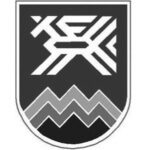 |
Develop a system for monitoring the carbon budget in the forests of Eastern Fennoscandia |
| Goal | Arrange a test site for carbon budget monitoring in middle Taiga forests/td> |
| Objectives | Arrange a test site (determine the boundaries and set permanent sampling areas)
Conduct preliminary assessment of the main carbon pools (tree layer, ground cover, forest litter, soils, large wood residues) in forest ecosystems at a test site; Organize works on estimating carbon dioxide emissions from the soil surface in a sampling area of the test site; Organize works on estimating: (1) carbon content in heartwood and sapwood; and (2) carbon transport to the root systems based on calculations of phloem conductivity in model trees at a sampling area of the test site. |
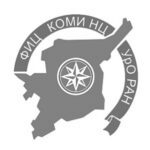 |
Assess carbon stocks and monitor greenhouse gas fluxes in forest ecosystems in the European northeast of Russia |
| Goal |
Develop a recording system for carbon stocks in phytomass, mortmass, and soils, and monitor greenhouse gases in the forest ecosystems of the taiga zone in the European northeast of Russia. |
| Objectives | Select methods and techniques for ground-based monitoring and remote sensing of the diversity in vegetation cover, soils, and soil biota, as well as carbon stocks in phytomass, mortmass, and soils at the Lyalsky test site.
Conduct express assessment of tree stands by the method of relascopic sampling, as well as a visual analysis of living ground cover and soils to obtain primary data for the Lyalsky test site area. Build a network of permanent sampling areas to monitor carbon pools and greenhouse gas fluxes in terrestrial ecosystems of the Lyalsky test site. Collect ground-based monitoring data of carbon stocks in plants and soils, diversity of soil biota, and greenhouse gas fluxes at fixed observation points. Create information resources based on the results of the project at the Lyalsky test site. |
 |
Assess carbon pools and carbon fluxes in representative forest ecosystems in Murmansk Oblast |
| Goal | Assess the carbon budget in representative terrestrial ecosystems in Murmansk Oblast. |
| Objectives | Assess carbon pools in soils and vegetation of representative spruce ecosystems in the area.
Assess soil emissions of greenhouse gases, influx of carbon compounds with atmospheric precipitation and carry-over from soil waters using a functioning network of monitoring sites. Estimate the rate of change in carbon reserves in the soils of old-growth spruce forests of Murmansk Oblast. |
 |
Study the spatiotemporal dynamics of greenhouse gas concentrations and fluxes in Western Siberia using stationary and mobile facilities |
| Goal | Based on measuring the concentration of greenhouse gases and greenhouse gas fluxes in various natural areas of Western Siberia in the surface air layer and free troposphere, conduct a study of the spatial and temporal dynamics of their distribution throughout the area and identify temporal variability trends. |
| Objectives | Using six high-rise masts equipped within the framework of the Japan-Russia intergovernmental treaty, monitor the greenhouse gas concentration at two altitudes in the surface air layer of various natural zones of Western Siberia. Based on the gradient technique, estimate the greenhouse gas fluxes for the mast areas.
Continue the process of measuring vertical distribution of greenhouse gases over the south Western Siberia that started in 1997 in order to replenish the unique system that only has two analogs in the world (the US and Brazil). Using the lab vehicle built by the Institute of Atmospheric Optics, measure the gas concentration along the route when servicing the masts described in Cl. 1 in order to determine the mesoscale heterogeneities of greenhouse gas distribution and identify anthropogenic sources located in Western Siberia. Based on the measurements of the isotopic carbon composition in the Fonovaya observatory, study the ratio of contributions of anthropogenic and natural sources to the overall balance of greenhouse gases. Using the data of the two measuring sites in Tomsk Oblast for determining the flows of CO2 and CH4 from soils, continue the monitoring. Based on the analysis of physicochemical soil properties, replenish the database developed during the implementation of the 1st project stage. Develop and test a technique for determining greenhouse gas flows by Eddy Covariance method using Yak-40 aircraft. |
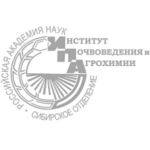 |
Develop a system for monitoring and assessing the carbon budget in grass biogeocenoses of the forest-steppe zones of Western and Eastern Siberia based on ground-based monitoring data |
| Goal | Develop and improve a system for monitoring the carbon budget in grass biogeocenoses of the forest-steppe zones of Western and Eastern Siberia using ground-based monitoring data. |
| Objectives | Develop a system for monitoring the carbon budget in grass biogeocenosis of the forest-steppe zones of Novosibirsk Oblast and Irkutsk Oblast using ground-based monitoring data.
Develop and implement methods and regulations to collect and process ground-based monitoring data on carbon pools in sampling areas of representative biogeocenoses. Develop and update a database of conversion coefficients for carbon stock calculations in various vegetation fractions and in soils of representative terrestrial ecosystems. Develop databases on carbon pools and greenhouse gas fluxes for the subsequent integration into a unified data analytics system. |
 |
Parameterize and monitor carbon fluxes and carbon pools in representative permafrost ecosystems of Yakutia. Expand and modernize the SakhaFluxNet observation network in the cryolithozone |
| Goal | Study the carbon budget of arctic and boreal ecosystems in the cryolithozone of the northeast Russia. |
| Objectives | Investigate carbon fluxes in representative permafrost ecosystems of Yakutia and their relation to ground-based processes;
Evaluate carbon pools in representative permafrost ecosystems of Yakutia: plant – soil – permafrost; Identify regional features of the carbon budget in representative ecosystems of the permafrost zone of Yakutia. |
 |
Dynamics of carbon reserves in typical wetland ecosystems of the middle taiga in Western Siberia |
| Goal |
Measure carbon stocks in typical swamp microlandscapes of the middle taiga in Western Siberia in order to assess the rate of carbon deposition in these ecosystems based on the difference between the stocks estimated within the interval of 5–7 years |
| Objectives | Measure carbon stocks in typical swamp microlandscapes of the middle taiga in Western Siberia with separation by component;
Conduct a detailed survey at the test site using UAVs to assess the areas occupied by typical swamp microlandscapes; Evaluate the carry-over of dissolved organic carbon from wetland ecosystems with surface runoff based on the monitoring of the concentration of dissolved organic carbon in waters flowing from swamps; Monitor atmosphere gas exchange of carbon dioxide in spruce-aspen forests of the middle taiga in Western Siberia by the method of turbulent pulsations, as well as associated hydrometeorological parameters of the environment (such as temperature and humidity, photosynthetically active radiation, wind speed and direction, and precipitation amount); Develop methodological approaches to assessing carbon pools and fluxes in wetland ecosystems of Russia as a work subgroup on wetland ecosystems within the framework of the key innovative project of national importance; Arrange a test site for type 2 intensive monitoring in the lichen pine forest and the moss swamp at the Kondinskie Lakes test site; conduct preliminary studies of said biogeocenoses. |
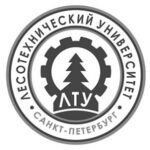 |
Assess the dynamics of carbon pools and greenhouse gas fluxes in old-growth middle taiga forests using the example of Vepssky Forest reserve |
| Goal | Analyze the long-term dynamics of carbon pools and the annual carbon balance (net ecosystem production) in the Vepssky Forest reserve |
| Objectives | Assess the dynamics of carbon stocks in the phytocenosis – soil system, taking into account the role of large wood residues in 10 sampling areas in two types of forest biogeocenoses predominant in the reserve: blueberry spruce (5 sampling areas) and blueberry sphagnum spruce (5 sampling areas), using unified methods developed by expert groups.
Determine the role of old-growth middle taiga forests in the carbon cycle and in mitigating the impact of climate change based on the materials of comprehensive long-term monitoring in the Vepssky Forest reserve. Provide the data to update the conversion rates for the region. Conduct comparative assessment of the role windthrow plays in the development of phytomass carbon pools according to remote sensing of the Earth data and the network of regularly laid permanent test areas (74 permanent test areas). Assess, for the first time for old-growth middle taiga forests, the role of wood litter and fallen leaves in the carbon balance development, as well as the peculiarities of carbon reserve dynamics in deadwood. |
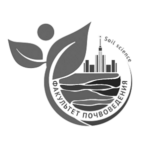 |
Assess and simulate the dynamics of soil pools and carbon fluxes in natural and agricultural ecosystems to develop a national carbon monitoring system |
| Goal |
Assess carbon stocks in soils and carbon fluxes in natural ecosystems of the forest zone; expand and refine the mathematical models applied to forecast the carbon dynamics in natural ecosystems and agroecosystems. |
| Objectives | Assess carbon stocks in soils and the intensity of climatically active gas fluxes in the northern taiga of Western Siberia at temporary observation sites (Yamalo-Nenets Autonomous Okrug);
Assess carbon reserves in soils, intake of carbon compounds with atmospheric precipitation, their transformation by the tree canopy and carry-over with soil waters in forest ecosystems of coniferous and broad-leaved forests (Zvenigorod Biostation of the Moscow State University, Moscow Oblast); Assess CO2 emissions from the soil, carbon stocks in the lower-tier vegetation, forest litter and soils in a test area of the forest ecosystem at Chashnikovo Academic Experimentation Center for Soil Ecology of the Moscow State University (Moscow Oblast):
Assess the carbon sequestration potential of Russian arable soils in the 0–30 cm layer with an increase in organic substance intake by the soil being 5%, 10%, and 20%. Calculate the potential for sequestration of arable soils by natural zone and subzone, as well as by constituent entity of the Russian Federation. Create a map of the sequestration potential of arable soils in Rostov Oblast based on the data from the Federal State Statistics Service (Roskomstat) and the Agrochemical Service of Russia. |
 |
Assess ecosystem of greenhouse gas fluxes and carbon accumulation in agroforestry landscapes formed in the arid conditions of southern Russia in order to develop adaptive measures of combatting desertification and land degradation |
| Goal |
Assess ecosystem flows of greenhouse gases and carbon accumulation in agroforestry landscapes in the arid conditions of southern Russia in order to develop adaptive measures of combatting desertification and land degradation. |
| Objectives | Substantiate the choice of land to set up an environment and climate research station (type 2 intensive level test area).
Set up an environment and climate research station (type 2 intensive level test area). Gather and analyze data on the characteristics of biogeocenoses at the type 2 intensive level test area. Substantiate the choice of land to set up 5 type 1 intensive level test areas in 2024. |
 |
Develop and test methodological approaches to gather and analyze sample data on qualitative and quantitative forest parameters, the condition and dynamics thereof when affected by anthropogenic and natural destructive factors |
| Goal |
Develop and test methodological approaches to gather and analyze sample data on qualitative and quantitative forest parameters, the condition and dynamics thereof when affected by anthropogenic and natural destructive factors as reference information for the development and verification of remote carbon monitoring technologies in all forests of the Russian Federation. |
| Objectives | Develop analytical and/or methodological and/or technical and/or instructional documents (reports, bulletins, regulations, methods, instructions, procedures, rules, etc.) for the project purposes, in 2 (two) counterparts, namely:
Create stationary and/or mobile observation points and/or observation networks created and/or modernized within the project, in the amount of 120 (one hundred and twenty) units (test sites), namely:
Conduct a trial run of the methodology for collecting data on soil carbon stocks during the ground-based survey of PPP GILs and the 120 test sites. |

Develop a system to monitor the carbon budget in terrestrial ecosystems based on the integration of ground-based measurements data, remote sensing data, and mathematical simulation data
Goal
Develop a system for ground-based and remote monitoring of carbon pools and greenhouse gas fluxes in Russia; ensure the development of a system for recording data on the fluxes of climatically active substances and carbon budget in forests and other terrestrial ecosystems
Objectives
Develop a system for monitoring and forecasting carbon pools and greenhouse gas fluxes in representative forests and other ground-based natural and natural-anthropogenic ecosystems of the Russian Federation based on the integration of ground-based monitoring data, remote sensing data, and mathematical simulation data;
Improve the accuracy of assessing greenhouse gas absorption in forest ecosystems by clarifying the quantitative and qualitative forest characteristics based on remote sensing of the Earth, considering the contribution of soils and lower-tier vegetation, recording greenhouse gas emissions due to the impact of wildfires, outbreaks of overproduction in insects, and forest diseases;
Forecast the greenhouse gas absorption by forests using combined modes of forest management and climate change scenarios based on a combination of mathematical simulations;
Create an observation program for a unified national system for monitoring climatically active substances in terms of ground-based and remote monitoring of carbon pools and greenhouse gas fluxes on the territory of the Russian Federation.
Goal
Develop working prototypes for the technology for automated processing of remote sensing data of the Earth and create a data analytics system to ensure continuous monitoring of carbon reserves and the balance between forests and other terrestrial ecosystems of the Russian Federation
Objectives
Develop methods and technologies to assess the main features of forests for monitoring of carbon reserves and carbon balance based on satellite remote sensing data of medium spatial resolution;
Develop methods and technologies to detect and assess forest disturbances due to the impact of wildfires and other destructive factors based on satellite remote sensing data of medium spatial resolution;
Obtain an updated assessment of carbon reserves and carbon balance in the forests of the Russian Federation based on the methods and technologies developed;
Develop the functionality and information support for the current prototype of a national data analytics system for monitoring of carbon in terrestrial ecosystems of the Russian Federation;
Form a set of reference data on the forests features for a network of test sites based on the processing of satellite remote sensing data of high spatial resolution and ground-based measurements;
Develop methodological approaches to mapping of meadow and steppe ecosystems based on satellite remote sensing data of medium spatial resolution;
Expand the technical framework to develop and create the data analytics system Uglerod-E (incl. procurement and commissioning of the necessary computer facilities and equipment);
Develop the basic structure and elements of specialized units of the data analytics system Uglerod-E aimed at providing ground-based and aerial (UAV) monitoring of forest carbon pools;
Develop proposals for the development of the central unit of the data analytics system Uglerod-E (also to ensure the option of solving the tasks of assessing and monitoring carbon reserves and the carbon budget in various terrestrial ecosystems).

Assess the spatial and temporal variability of ecosystem greenhouse gas fluxes in terrestrial ecosystems of the Russian Federation
Goal
Obtain estimates of the spatial and temporal variability of ecosystem fluxes of greenhouse gases based on a network of environmental and climate monitoring stations
Objectives
Develop methodological recommendations to organize the monitoring of ecosystem fluxes of greenhouse gases based on the method of turbulent pulsations.
Develop and form a database of ecosystem greenhouse gas fluxes; integrate the database into a unified data analytics system for carbon pools and carbon fluxes of the Russian Federation.
Modernize the instrumental framework of greenhouse gas fluxes observations in the southern taiga ecosystems of the European part of the Russian Federation.
Monitor ecosystem greenhouse gas fluxes in the southern taiga ecosystems of the European part of Russia; obtain cumulative estimates of greenhouse gas flows in daily and seasonal dynamics.
Assess CO2 emissions from soils of representative southern taiga ecosystems of the European part of the Russian Federation; integrate the measurements data into a unified database for emissive fluxes.
Goal
Assess carbon pools and the carbon budget in representative ecosystems of coniferous-deciduous and deciduous forests in the southern part of Moscow Oblast and conduct predictive modeling to assess the dynamics of carbon pools and carbon fluxes in forest ecosystems
Objectives
Conduct intensive year-round monitoring of CO2 emissions from soils of 6 representative ecosystems in mixed and deciduous forests and analyze the data obtained with reference to the changes in hydrothermal indicators.
Develop a database of CO2 emissions from soils of representative ecosystems in the southern part of Moscow Oblast in accordance with the developed structure.
Integrate the observations of CO2 emissions from soils collected by other organizations of the consortium into a unified database to include them in the data analytics system, and conduct its primary analysis within the framework of the developing national monitoring network.
Develop a brief procedure and conduct training seminars related to recording CO2 emissions from soils by the chamber method while using domestic equipment.
Determine main carbon pools in representative forest ecosystems in the southern part of Moscow Oblast by unified methods developed by the consortium’s expert teams, and analyze the data obtained.
Assess the rates of change in C reserves in the soils of the southern part of Moscow Oblast when transferring arable land to fallow lands.
Using the existing means of integrating the Romul_Hum soil organic matter dynamics model with the FORRUS-S dynamic tree stand model, forecast changes in main carbon pools of mortmass (deadwood, hardwood, forest litter, soil organic matter) and heterotrophic soil respiration for key forest areas.
Goal
Develop and substantiate the legal and infrastructural framework for collection, processing, analysis, storage, and use of reliable and internationally recognized observed and calculated data to conduct an objective assessment of carbon budget indicators in agroecosystems of Russia as a component of the Unified National System for Monitoring Climatically Active Substances
Objectives
Develop and test scientific and methodological, scientific and technical, information and metrological support for the observation network of ground-based recording and monitoring of carbon budget features in agroecosystems of Russia, in particular:
- design the location of a ground-based monitoring observation network to assess carbon reserves and carbon budget in Russian agroecosystems with various modes of agricultural land use;
- develop and test, using a simulation network of test sites, the methods for assessing carbon pools in Russian agroecosystems that meet international standards, including a procedure for soil sampling, sample preparation, analytical determination of organic/inorganic carbon values in soils, soil density, use of reference samples, verification of laboratory equipment, and interlaboratory comparison tests;
- launch the first stage of the network of model test sites for agroecosystems of Russia with various modes of agricultural land use (at least five sites)
Develop and substantiate a methodology for verifying and calibrating the remote sensing results for carbon budget features in agricultural ecosystems of Russia;
Create a themed component of the unified data analytics system to collect, store, process, and analyze monitoring data of carbon pools in agroecosystems of Russia;
Prepare popular science aids and conduct activities aimed at raising awareness among the general public as well as businesses and management units of various levels in the field of biogeochemical carbon cycle management in agricultural land use
Goal
Create a national system for monitoring climatically active substances and carbon reserves in the main natural and anthropogenically modified ecosystems of the black earth region and forecasting on the territory of Russia in order to provide adaptation solutions to be applied locally and nationally
Objectives
Determine the seasonal and interannual variability of the balance of main biogenic greenhouse gases in crucial agricultural and natural ecosystems of the forest-steppe subzone in the European part of Russia. Assess the main carbon reservoirs in ecosystems under study with a given frequency. Develop a system of permanent test sites for long-term field observations of the dynamics of greenhouse gases and related components of the main biogeochemical cycles within the test site area;
Based on field observations (see Objective 1), select, adjust, and verify simulation and regression models, as well as C-calculators that reflect the biogeochemical carbon cycle on the developed agricultural black earth area of Russia. Provide methodological support of spatiotemporal models for quantitative assessment of carbon balance components using remote sensing data and ground-based measurements for the use in the monitoring system;
Ensure continuous replenishment and modification of the database in accordance with the consortium’s methodological requirements.
Goal
Design a scientific and methodological framework for the development of a monitoring system for anthropogenic and rewatered peatlands being the sources and sinks of greenhouse gases.
Objectives
Develop a methodological framework for monitoring drained and rewatered peatlands being the sources and sinks of greenhouse gases.
Develop a methodological framework for recording rewatered unused drained peatlands in the national inventory of anthropogenic sources and absorption by sinks of greenhouse gases that are not regulated by the Montreal Protocol.

Provide model estimates for modern carbon pools and carbon fluxes in the tundra and forest-tundra zones of Russia. Synthesize the data on methane emissions from terrestrial ecosystems of Russia
Goal
Assess modern carbon pools and carbon fluxes in the tundra and forest-tundra zones of Russia using the mathematical simulation methods. Identify areas in Russia whose ecosystems should be included in the methane emission monitoring system
Objectives
Modernize the existing two-compartmental model of the carbon cycle in tundra and forest-tundra ecosystems into a three-compartmental one.
Clarify the functional dependences of carbon fluxes on environmental factors in the existing dynamic model of the carbon cycle.
Carry out the carbon cycle dynamic model calibration based on the existing digital database of parameter fields; carry out the identification of the model according to instrumental data.
Carry out model calculations of carbon reserves and intensity of carbon gas exchange fluxes for the ecosystems of Russia under study.
Develop a database for model calculations of reserves and intensities of carbon fluxes in the tundra and forest-tundra ecosystems of Russia.
Collect and synthesize the available information related to the assessment of methane emissions from various ecosystems of Russia and estimate the representativeness of the data.
Identify areas in Russia whose ecosystems should be included in the methane emission monitoring system.
 Estimate carbon stocks and greenhouse gas fluxes in forest ecosystems of Central Siberia based on long-term monitoring data. Create a model system for assessing the productivity of Russian forests under the conditions of climate change |
|
| Goal
Assess carbon stocks and the spatiotemporal variability of the greenhouse gas balance based on the results of observations in ecosystems on the territory Central Siberia. Provide information and model support for monitoring the productivity of forests in Russia in order to assess the budgets of crucial climatically active substances and develop programs for adaptation and mitigation of undesirable consequences of climate change in Russia |
|
| Objectives
Conduct instrumental monitoring of the dynamics of greenhouse gas concentrations and fluxes in representative ecosystems of Central Siberia; Assess the spatiotemporal variability of exchange and soil emission fluxes of greenhouse gases based on the results of instrumental (year-round/seasonal) observations in ecosystems of Central Siberia; Assess stored carbon pools in various components of forest-tundra and forest-steppe ecosystems of Central Siberia; Assess carbon pools in the phytomass of representative forest ecosystems of the northern, middle, and southern taiga of Central Siberia; Develop a model system for assessing the productivity of Russian forests under the conditions of climate change; Assess the productivity indicators of Russian forests as of the early 2020s; Design databases for measuring carbon fluxes and pools of the main components of forest ecosystems in Central Siberia; register the databases. |
 Assess carbon pools and carbon fluxes in forest and wetland ecosystems of the southern taiga subzone of Western Siberia |
|
| Goal
Conduct comprehensive assessment of the dynamics of carbon reserves and carbon fluxes in forest and wetland ecosystems of the southern taiga forests of Western Siberia, and prototype a data analytics system for monitoring and conducting comprehensive analysis of greenhouse gas fluxes in wetland ecosystems |
|
| Objectives
Assess carbon pools and greenhouse gas fluxes in terrestrial ecosystems of the southern taiga subzone of Western Siberia based on standardized world-class infrastructure Develop a concept and program framework for prototyping a distributed data analytics system to collect, store, process, and analyze monitoring data for carbon pools and greenhouse gas fluxes in terrestrial ecosystems of the southern taiga subzone of Western Siberia |
 Develop a system for monitoring the carbon budget in the forests of Eastern Fennoscandia |
|
| Goal Arrange a test site for carbon budget monitoring in middle Taiga forests Objectives Arrange a test site (determine the boundaries and set permanent sampling areas)Conduct preliminary assessment of the main carbon pools (tree layer, ground cover, forest litter, soils, large wood residues) in forest ecosystems at a test site;Organize works on estimating carbon dioxide emissions from the soil surface in a sampling area of the test site;Organize works on estimating: (1) carbon content in heartwood and sapwood; and (2) carbon transport to the root systems based on calculations of phloem conductivity in model trees at a sampling area of the test site. |
 Assess carbon stocks and monitor greenhouse gas fluxes in forest ecosystems in the European northeast of Russia |
|
| Goal
Develop a recording system for carbon stocks in phytomass, mortmass, and soils, and monitor greenhouse gases in the forest ecosystems of the taiga zone in the European northeast of Russia. Objectives Select methods and techniques for ground-based monitoring and remote sensing of the diversity in vegetation cover, soils, and soil biota, as well as carbon stocks in phytomass, mortmass, and soils at the Lyalsky test site. Conduct express assessment of tree stands by the method of relascopic sampling, as well as a visual analysis of living ground cover and soils to obtain primary data for the Lyalsky test site area. Build a network of permanent sampling areas to monitor carbon pools and greenhouse gas fluxes in terrestrial ecosystems of the Lyalsky test site. Collect ground-based monitoring data of carbon stocks in plants and soils, diversity of soil biota, and greenhouse gas fluxes at fixed observation points. Create information resources based on the results of the project at the Lyalsky test site. |
 Assess carbon pools and carbon fluxes in representative forest ecosystems in Murmansk Oblast Goal Assess the carbon budget in representative terrestrial ecosystems in Murmansk Oblast. Objectives Assess carbon pools in soils and vegetation of representative spruce ecosystems in the area.Assess soil emissions of greenhouse gases, influx of carbon compounds with atmospheric precipitation and carry-over from soil waters using a functioning network of monitoring sites.Estimate the rate of change in carbon reserves in the soils of old-growth spruce forests of Murmansk Oblast. |
 Study the spatiotemporal dynamics of greenhouse gas concentrations and fluxes in Western Siberia using stationary and mobile facilities Goal Based on measuring the concentration of greenhouse gases and greenhouse gas fluxes in various natural areas of Western Siberia in the surface air layer and free troposphere, conduct a study of the spatial and temporal dynamics of their distribution throughout the area and identify temporal variability trends. ObjectivesUsing six high-rise masts equipped within the framework of the Japan-Russia intergovernmental treaty, monitor the greenhouse gas concentration at two altitudes in the surface air layer of various natural zones of Western Siberia. Based on the gradient technique, estimate the greenhouse gas fluxes for the mast areas.Continue the process of measuring vertical distribution of greenhouse gases over the south Western Siberia that started in 1997 in order to replenish the unique system that only has two analogs in the world (the US and Brazil).Using the lab vehicle built by the Institute of Atmospheric Optics, measure the gas concentration along the route when servicing the masts described in Cl. 1 in order to determine the mesoscale heterogeneities of greenhouse gas distribution and identify anthropogenic sources located in Western Siberia.Based on the measurements of the isotopic carbon composition in the Fonovaya observatory, study the ratio of contributions of anthropogenic and natural sources to the overall balance of greenhouse gases.Using the data of the two measuring sites in Tomsk Oblast for determining the flows of CO2 and CH4 from soils, continue the monitoring.Based on the analysis of physicochemical soil properties, replenish the database developed during the implementation of the 1st project stage. Develop and test a technique for determining greenhouse gas flows by Eddy Covariance method using Yak-40 aircraft. |
 Develop a system for monitoring and assessing the carbon budget in grass biogeocenoses of the forest-steppe zones of Western and Eastern Siberia based on ground-based monitoring data Goal Develop and improve a system for monitoring the carbon budget in grass biogeocenoses of the forest-steppe zones of Western and Eastern Siberia using ground-based monitoring data. ObjectivesDevelop a system for monitoring the carbon budget in grass biogeocenosis of the forest-steppe zones of Novosibirsk Oblast and Irkutsk Oblast using ground-based monitoring data.Develop and implement methods and regulations to collect and process ground-based monitoring data on carbon pools in sampling areas of representative biogeocenoses.Develop and update a database of conversion coefficients for carbon stock calculations in various vegetation fractions and in soils of representative terrestrial ecosystems. Develop databases on carbon pools and greenhouse gas fluxes for the subsequent integration into a unified data analytics system. |
 Parameterize and monitor carbon fluxes and carbon pools in representative permafrost ecosystems of Yakutia. Expand and modernize the SakhaFluxNet observation network in the cryolithozone Goal Study the carbon budget of arctic and boreal ecosystems in the cryolithozone of the northeast Russia. ObjectivesInvestigate carbon fluxes in representative permafrost ecosystems of Yakutia and their relation to ground-based processes;Evaluate carbon pools in representative permafrost ecosystems of Yakutia: plant – soil – permafrost; Identify regional features of the carbon budget in representative ecosystems of the permafrost zone of Yakutia. |
 Dynamics of carbon reserves in typical wetland ecosystems of the middle taiga in Western SiberiaGoal Measure carbon stocks in typical swamp microlandscapes of the middle taiga in Western Siberia in order to assess the rate of carbon deposition in these ecosystems based on the difference between the stocks estimated within the interval of 5–7 years Objectives Measure carbon stocks in typical swamp microlandscapes of the middle taiga in Western Siberia with separation by component; Conduct a detailed survey at the test site using UAVs to assess the areas occupied by typical swamp microlandscapes; Evaluate the carry-over of dissolved organic carbon from wetland ecosystems with surface runoff based on the monitoring of the concentration of dissolved organic carbon in waters flowing from swamps; Monitor atmosphere gas exchange of carbon dioxide in spruce-aspen forests of the middle taiga in Western Siberia by the method of turbulent pulsations, as well as associated hydrometeorological parameters of the environment (such as temperature and humidity, photosynthetically active radiation, wind speed and direction, and precipitation amount); Develop methodological approaches to assessing carbon pools and fluxes in wetland ecosystems of Russia as a work subgroup on wetland ecosystems within the framework of the key innovative project of national importance; Arrange a test site for type 2 intensive monitoring in the lichen pine forest and the moss swamp at the Kondinskie Lakes test site; conduct preliminary studies of said biogeocenoses. |
 Assess the dynamics of carbon pools and greenhouse gas fluxes in old-growth middle taiga forests using the example of Vepssky Forest reserve Goal Analyze the long-term dynamics of carbon pools and the annual carbon balance (net ecosystem production) in the Vepssky Forest reserve ObjectivesAssess the dynamics of carbon stocks in the phytocenosis – soil system, taking into account the role of large wood residues in 10 sampling areas in two types of forest biogeocenoses predominant in the reserve: blueberry spruce (5 sampling areas) and blueberry sphagnum spruce (5 sampling areas), using unified methods developed by expert groups.Determine the role of old-growth middle taiga forests in the carbon cycle and in mitigating the impact of climate change based on the materials of comprehensive long-term monitoring in the Vepssky Forest reserve. Provide the data to update the conversion rates for the region. Conduct comparative assessment of the role windthrow plays in the development of phytomass carbon pools according to remote sensing of the Earth data and the network of regularly laid permanent test areas (74 permanent test areas). Assess, for the first time for old-growth middle taiga forests, the role of wood litter and fallen leaves in the carbon balance development, as well as the peculiarities of carbon reserve dynamics in deadwood. |
 Assess and simulate the dynamics of soil pools and carbon fluxes in natural and agricultural ecosystems to develop a national carbon monitoring system |
|
| Goal
Assess carbon stocks in soils and carbon fluxes in natural ecosystems of the forest zone; expand and refine the mathematical models applied to forecast the carbon dynamics in natural ecosystems and agroecosystems. |
|
| Objectives
Assess carbon stocks in soils and the intensity of climatically active gas fluxes in the northern taiga of Western Siberia at temporary observation sites (Yamalo-Nenets Autonomous Okrug); Assess carbon reserves in soils, intake of carbon compounds with atmospheric precipitation, their transformation by the tree canopy and carry-over with soil waters in forest ecosystems of coniferous and broad-leaved forests (Zvenigorod Biostation of the Moscow State University, Moscow Oblast); Assess CO2 emissions from the soil, carbon stocks in the lower-tier vegetation, forest litter and soils in a test area of the forest ecosystem at Chashnikovo Academic Experimentation Center for Soil Ecology of the Moscow State University (Moscow Oblast):
Assess the carbon sequestration potential of Russian arable soils in the 0–30 cm layer with an increase in organic substance intake by the soil being 5%, 10%, and 20%. Calculate the potential for sequestration of arable soils by natural zone and subzone, as well as by constituent entity of the Russian Federation. Create a map of the sequestration potential of arable soils in Rostov Oblast based on the data from the Federal State Statistics Service (Roskomstat) and the Agrochemical Service of Russia. |
 Assess ecosystem of greenhouse gas fluxes and carbon accumulation in agroforestry landscapes formed in the arid conditions of southern Russia in order to develop adaptive measures of combatting desertification and land degradation |
|
| Goal
Assess ecosystem flows of greenhouse gases and carbon accumulation in agroforestry landscapes in the arid conditions of southern Russia in order to develop adaptive measures of combatting desertification and land degradation. Objectives Substantiate the choice of land to set up an environment and climate research station (type 2 intensive level test area). Set up an environment and climate research station (type 2 intensive level test area). Gather and analyze data on the characteristics of biogeocenoses at the type 2 intensive level test area. Substantiate the choice of land to set up 5 type 1 intensive level test areas in 2024. |
|
Develop analytical and/or methodological and/or technical and/or instructional documents (reports, bulletins, regulations, methods, instructions, procedures, rules, etc.) for the project purposes, in 2 (two) counterparts, namely:
Create stationary and/or mobile observation points and/or observation networks created and/or modernized within the project, in the amount of 120 (one hundred and twenty) units (test sites), namely:
Conduct a trial run of the methodology for collecting data on soil carbon stocks during the ground-based survey of PPP GILs and the 120 test sites. |
|
